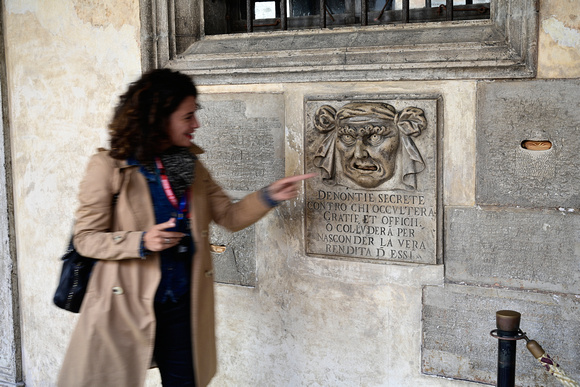Imagine a time in which citizens could voice their concerns anonymously by placing hand-written notes into designated boxes. In turn, the government would address each complaint individually. No need for mass protests or demonstrations. Welcome to Renaissance-era Venice.
These boxes, or bocche di leone (lions’ mouths), were scattered throughout the city, from the
Doge’s Palace to the Dorsoduro district. Each stone receptacle resembled an intricately carved face, often that of a lion—the winged lion of St. Mark is the symbol of
Venice—with a slot at the mouth into which letters could be inserted. The earliest lion’s mouth adorning the Doge’s Palace dates back to 1618 and is still intact.
With so many tribunal offices around the palace, each state department had its own box. And across the city, different boxes addressed different issues—such as taxes, market fraud, or trade disputes—depending on their location. This spoke to the system of government in place at the time, an oligarchic republic led by the doge and known locally as La Serenissima (Most Serene Republic of Venice).
The box embedded in the wall of the church of Santa Maria della Visitazione in Dorsoduro, for example, was used to complain about garbage in the canals. It read “denunciations related to public health for the Sestiere of Dorsoduro.” Centuries later, this box remains, and so too does the pollution problem. If only this mouth could speak again.


